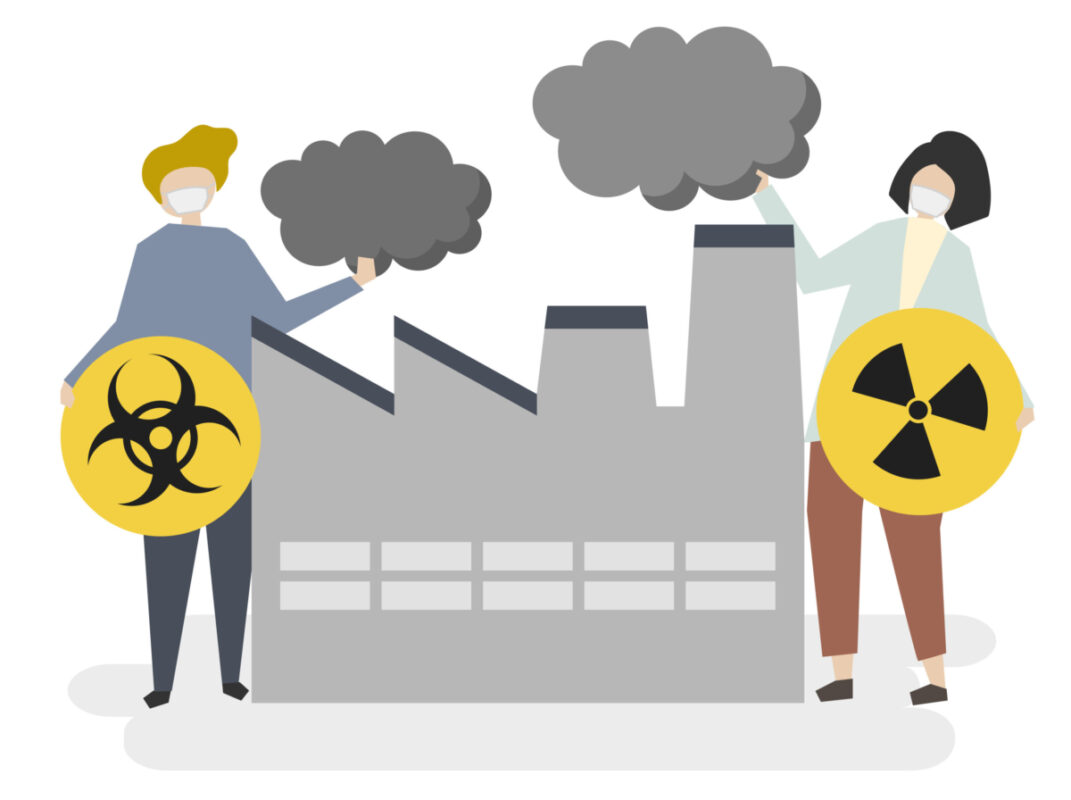What Is COSHH? The Complete Guide to COSHH Compliance

COSHH is an acronym for ‘Control of Substances Hazardous to Health’. COSHH are a set of regulations that surround workplaces in which hazardous substances are present. However, it is vital to remember that not all toxic or poisonous substances fall under the COSHH regulations. COSHH covers only certain hazardous substances, and if those are present in your workplace, you are obliged to comply with COSHH regulations.
The aim of COSHH extends to protecting the employees exposed to hazardous substances in their daily work. Most companies, especially those in the UK, must strictly comply with the COSHH regulations. If your workplace has hazardous substances, you must know how to handle them properly and ensure your well-being. This article will explain the step-by-step process to achieve COSHH compliance in your workplace.
What workplaces fall under the COSHH regulations?
COSHH regulations surround all those workplaces where employees are exposed to hazards such as dangerous or toxic substances. Some workplaces that are responsible for assuring their compliance with COSHH are:
- Manufacturing plants: Workers often encounter chemicals, solvents, and other hazardous substances.
- Laboratories: Various hazardous substances, such as acids, alkalis, and solvents, are present in labs. Workers employed in laboratories are obliged to follow COSHH regulations to ensure their safety.
- Construction site: Workers at construction sites can be exposed to various types of hazardous substances. Dust, Fumes, and Gases are some of the most common hazards found at construction sites.
- Healthcare facilities: Workers such as Doctors, Nurses, and Cleaners in a hospital can come across different types of hazardous substances in their workplace, which they must be careful about. Examples of these dangerous substances include cleaning agents, disinfectants, drugs, and acids.
- Agriculture and farming: The work of agriculture and farming requires the involvement of pesticides and other dangerous chemicals. These substances can threaten a worker’s health if not managed properly.
- Hair and beauty salons: Chemicals such as hair dyes and perming solutions are found in workplaces.
- Motor vehicle repair shops: Solvents, lubricants, and fuels are some of the harmful materials found in such workplaces.
Roadmap to COSHH compliance
You might be asking, “How many steps there are to COSHH compliance?” The answer to that is rather not so simple. Hazardous substances can cause great harm to a person if mishandled or not taken care towards. So, to cost to eliminate all these hazards is quite lengthy but easy once understood. Actually, there can be a few or more steps to COSHH compliance, but to maximize your safety when exposed to hazardous substances, you should follow the mentioned steps.
Step 1 – COSHH Risk Assessment
Conducting a COSHH risk assessment in your workplace is the first step towards COSHH compliance. A risk assessment assists in analysing all dangerous substances stored and used in the workplace. It is crucial to remember that not all compounds are labelled as hazardous, but they can nonetheless endanger your health.
A COSHH risk assessment is typically the responsibility of an employer. However, assume the employer lacks the necessary abilities. In that instance, a third party can be hired to evaluate. Employers can also train their employees to do risk assessments by offering various training courses. It is important to consider the following items in your COSHH risk assessment:
- Making a list of all the hazardous substances present in the workplace.
- Evaluating the health risks of all the hazards present in the workplace.
- Make a list of who may be harmed by these hazards and how.
- Analyse the level of exposure each hazardous substance poses.
- Record all the control measures that you should implement.
Step 2 – Eliminating the Risks
The ideal safety practice for exposure to hazards is to eliminate all dangers created by dangerous substances. Employers have several risk-control measures that they could implement in the workplace. They have the option of skipping tasks that involves risky substances. For example, instead of using bleach, a cleaner can use a mild soap and water solution to clean. This would make him less vulnerable to the harmful toxin. In other circumstances, the work could be modified to avoid the usage of toxic material.
An employer, on the other hand, must train employees to be competent enough to handle risks on their own. A person working in a laboratory, for example, should be qualified and prepared to handle hazards such as spilling acid on the floor. If not, it is the obligation of a higher-up to offer personnel training so that they can manage such modest risks on their own. The firm should give their employees training courses, such as bodily fluid spillage kits. These classes teach workers how to execute minor duties in the workplace, such as cleaning and managing dangerous chemicals. As a result, they and their colleagues could be shielded from future harm.
Step 3 – Implementing Control Measures
Depending on the risk assessment results provided to the employer, employers should put in appropriate control measures to reduce these risks. When implementing control measures in their workplace, employers should consider the following:
- Elimination: Removing a high-level hazardous substance in the workplace and replacing it with a less dangerous substance.
- Substitution: Replacing the hazardous substance from work tasks and using another non-hazardous substitute.
- Administrative control: Changing how the work is carried out so that there is no exposure to hazards.
- PPE: Personal protective equipment for workers’ safety. PPE includes respiratory masks, gloves, safety glasses, etc.
Step 4 – Reviewing Control Measures
It is also critical to examine all control strategies to ensure that they are still effective. When work procedures change, or a new hazard or substance is introduced, periodic reviews must be done. A review could help in identifying any potential issues with the control methods. Employers must also ensure that their COSHH risk assessments and control methods are effective and up to date on a regular basis.
Step 5 – Conducting Health Surveillance
An employer should conduct frequent physical health assessments on its staff members. A professional, such as a doctor or nurse, should do health surveillance. Checking that staff have not developed skin disorders or other respiratory problems is part of health surveillance. To keep infections from spreading or occurring in the victim’s body.
Step 6 – Develop Emergency Procedures
Accidents might occur even if you have excellent control systems in place. Employers must guarantee that professional teams are prepared to respond appropriately in the event of an emergency. During an emergency, a company can assign duties to different capable employees to report and take appropriate safety steps.
Step 7 – Training
Training is an essential component in assuring your compliance with COSHH regulations. Training equips a person with the information and practical experience needed to fulfil a certain job or task. The same is true for COSHH compliance; online COSHH training courses will teach you how to demonstrate compliance with COSHH standards properly. Furthermore, COSHH training raises awareness of workplace dangers, risks and how to establish and adhere to safety practices. It is equally important for an employer to provide COSHH training courses to their employees so that they can do their tasks properly and in accordance with the legislation.
Why COSHH compliance is important?
The primary purpose of COSHH regulations is to protect the employees in the workplace that are exposed to hazards while at work. Therefore, compliance with COSHH can bring many benefits to you and your firm. Hence some of the following benefits are:
- Legal obligation: Compliance with COSHH rules is a legal requirement in several nations. Following COSHH regulations can save your company from fines, legal actions, and reputational damage.
- Improves productivity: A safe and healthy work environment boosts employee morale and productivity. Employees who feel comfortable at work are more likely to concentrate and achieve better results.
- Reputation: Compliance with COSHH rules can also aid in protecting a company’s reputation. Assume your company is well-known for taking health and safety seriously. Customers, staff, and other stakeholders are more inclined to favour it.
- Saving costs: COSHH compliance can result in long-term cost savings. A safe and secure workplace equals fewer accidents, which means no or fewer worker injuries. Fewer workplace injuries would save the company money on insurance premiums, medical bills, and workers’ compensation claims.
Conclusion
To summarise, establishing COSHH compliance in the workplace is a critical process that includes planning, implementation, and evaluation. The employer’s exclusive duty is to guarantee that their organisation complies with COSHH. This blog has thoroughly reviewed what workplaces require COSHH compliance and how they might achieve it. As an employer, you can learn and implement this guidance in your workplace by following the seven steps outlined above.
It is critical to recognise that COSHH regulations are in place to protect you and your staff. It is not only a legal requirement, but compliance will benefit your organisation. Employers can establish a safer working environment and boost productivity by applying the control methods recommended in this handbook.











Responses